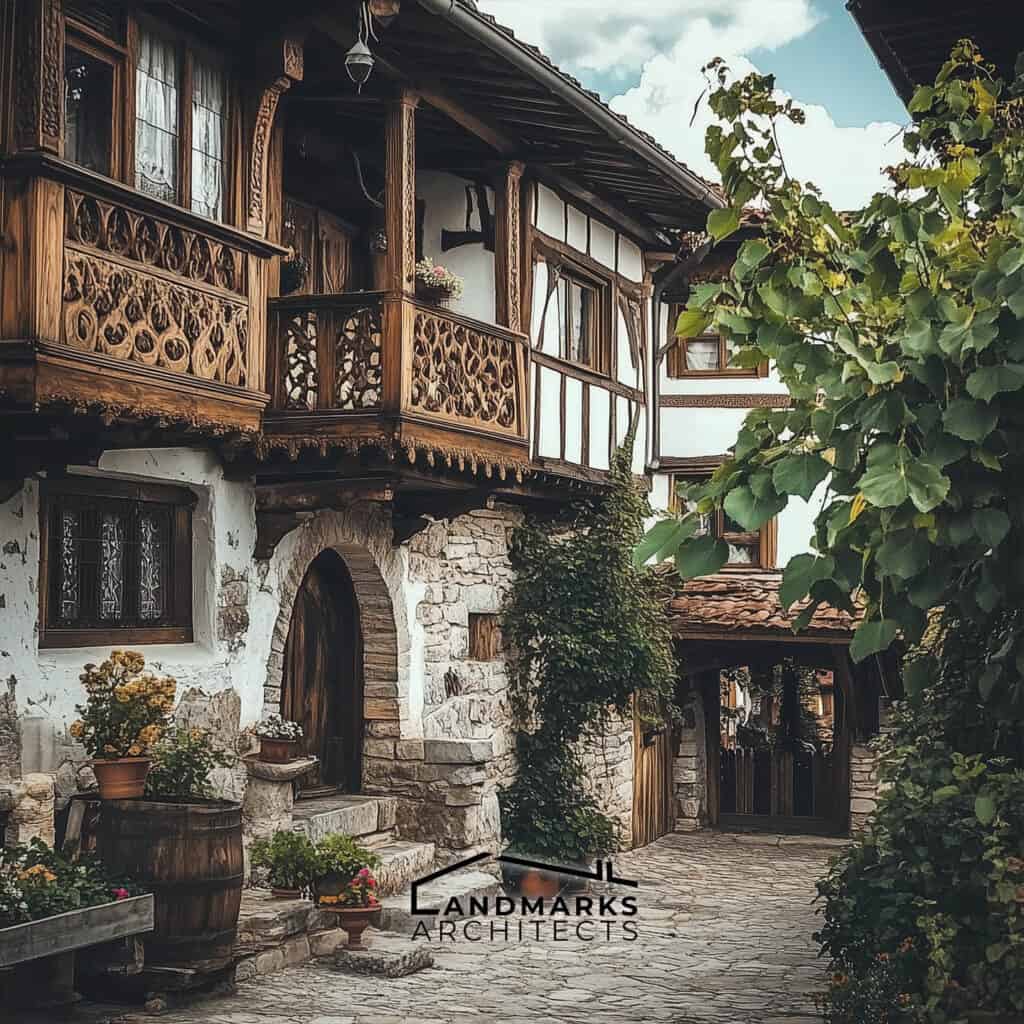
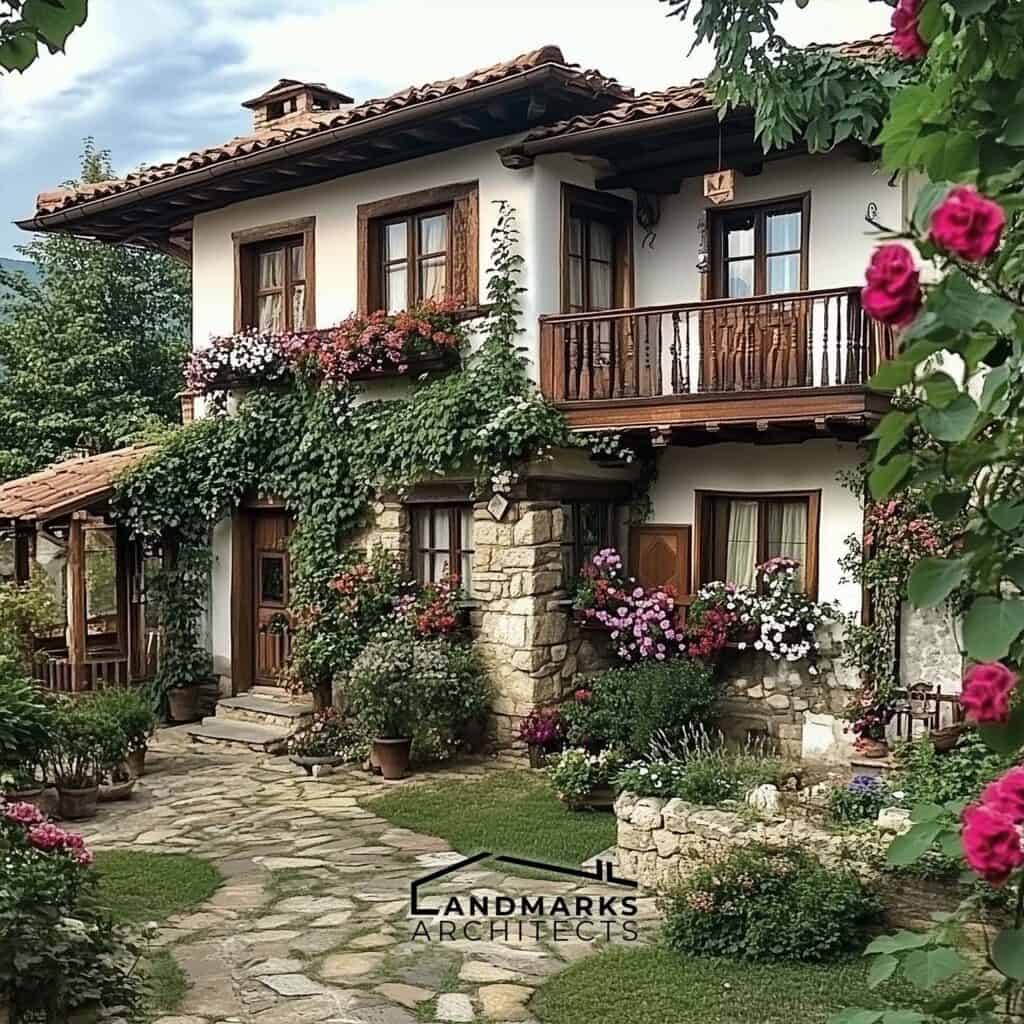

Ever wondered how traditional Bulgarian architecture blends history with modern innovation? This unique architectural style reflects a rich heritage shaped by various cultures over centuries.
As a history enthusiast or architecture aficionado, you’re keen to understand how Bulgarian architecture has evolved and adapted. Exploring this blend of heritage and modernity might seem intricate, but you’re in good hands.
At Landmarks Architects, we’re here to guide you through the fascinating world of traditional Bulgarian architecture. With our insights, you’ll uncover how ancient influences continue to shape contemporary designs.
In this article, we’ll explore:
- Thracian Foundations: Ancient stone settlements and their influence.
- Byzantine Contributions: Grand churches and decorative motifs.
- Ottoman Era Adaptations: Courtyards and wooden ceilings.
- National Revival Period: Local materials and intricate designs.
- Modern Influences: Preservation and contemporary integrations.
Ready to explore the Bulgaria’s architectural evolution? Continue reading to discover how historical styles merge with modern innovations, preserving a rich cultural legacy.
See Also Famous Buildings in Poland
Historical Development of Bulgarian Architecture

Bulgarian architecture has evolved through distinct historical phases, influenced by various cultures. Each period has contributed to the unique character of traditional Bulgarian houses and significant architectural landmarks across the country.
1. Thracian Architecture
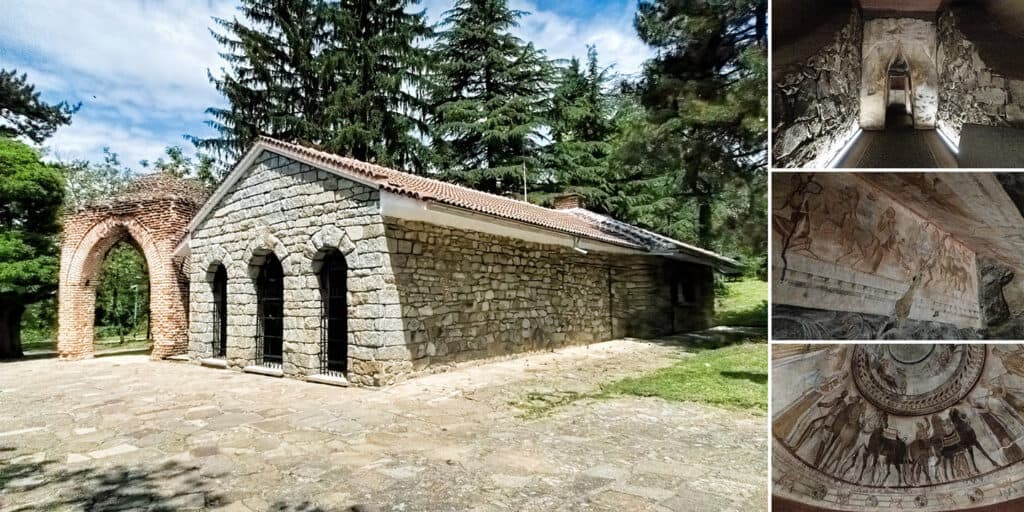
Thracian architecture, dating back to ancient times, is known for its fortified stone settlements and burial mounds, like those in the Valley of the Thracian Kings. Their use of stone in foundations highlights their engineering skills.
Influential mythical architectural forms and decorative elements in tombs and sanctuaries are notable. Sites such as the Thracian Temple of K юния near Kazanlak display complex designs aligned with astronomical events.
2. Byzantine Contributions
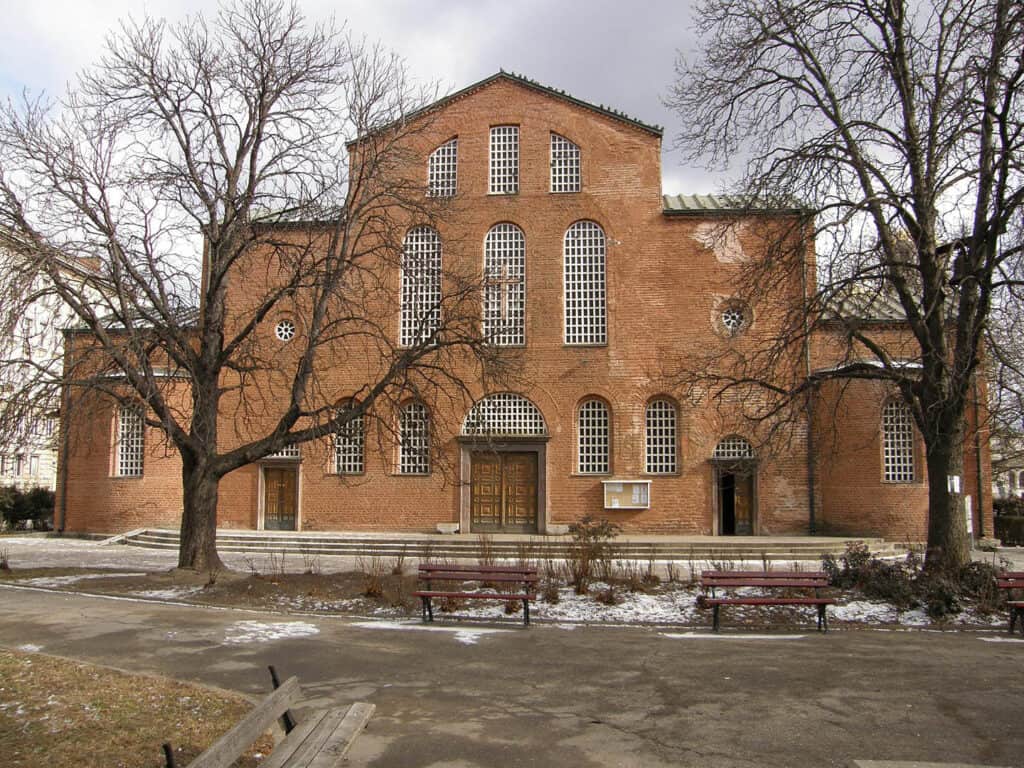
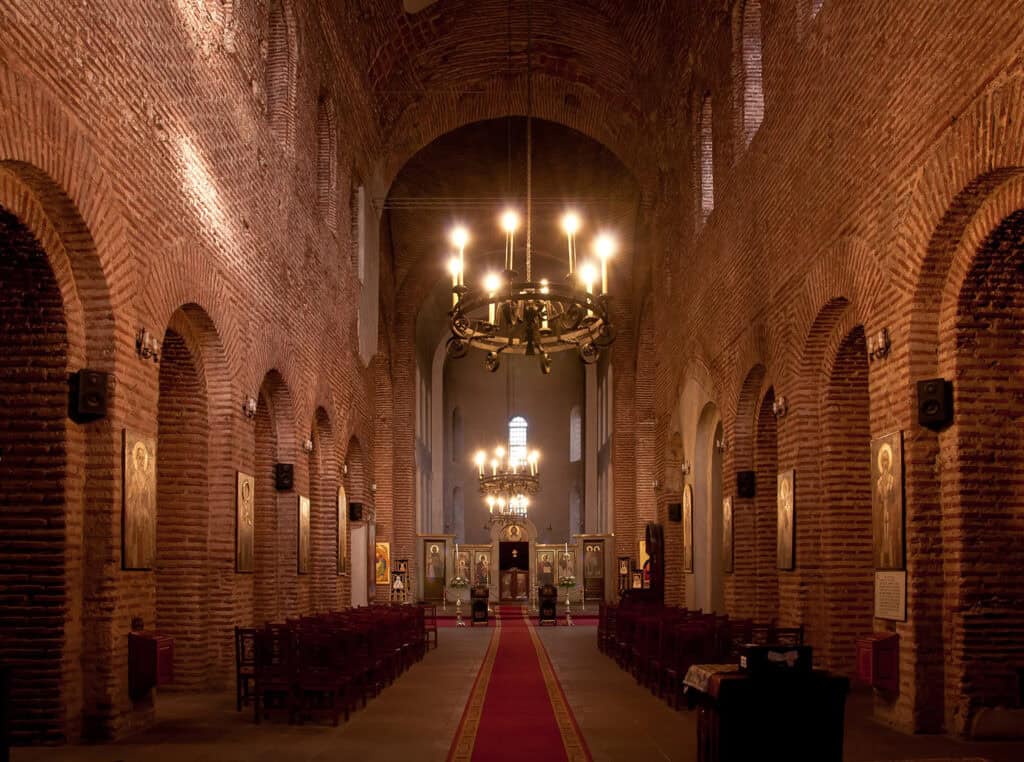
The Byzantine Empire greatly influenced Bulgarian architecture, introducing grand churches, intricate mosaics, and brick as a key material. Structures like St. Sofia Church in Sofia showcase Byzantine designs with domes and decorative motifs. Large windows allowed natural light to create an ethereal feel inside.
This style laid the foundation for future architectural developments, blending practical design with artistic expression. When examining the Types of Architectural Styles, the Byzantine style is notable for its rich ornamentation and structural innovations that have left a lasting impact on architectural heritage.
3. Ottoman Era Adaptations
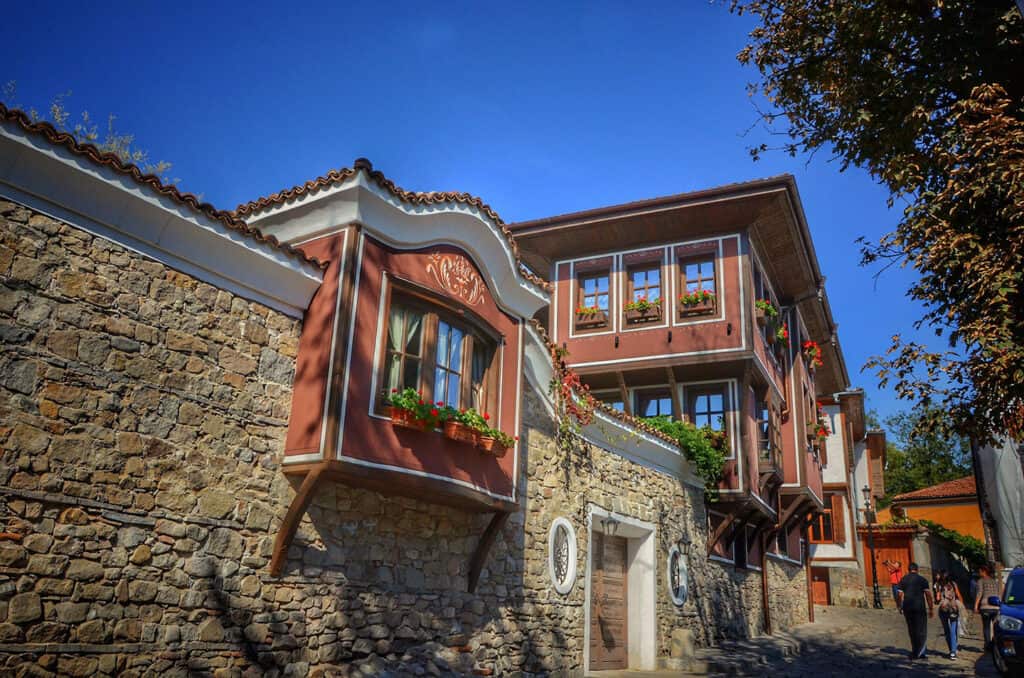
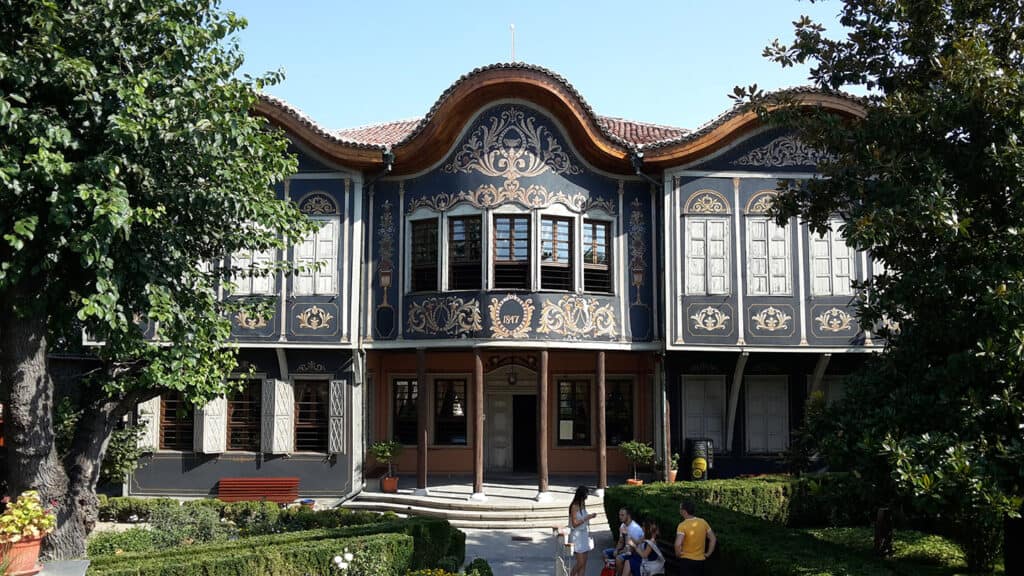
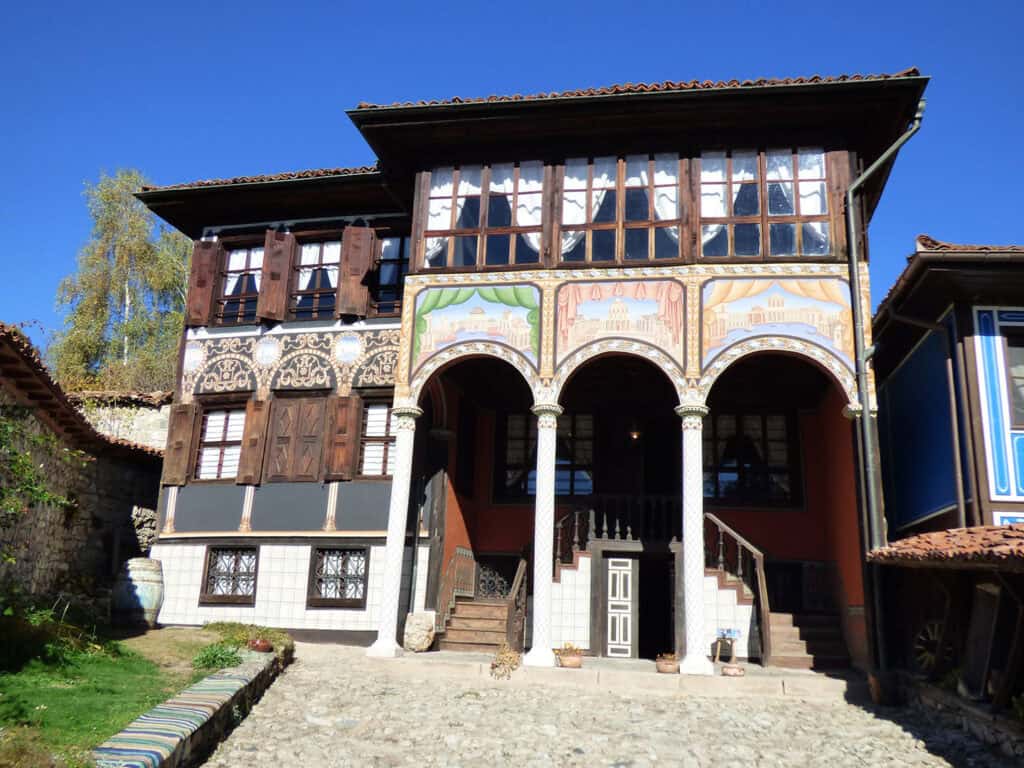
The Ottoman Empire, from the late 14th century, influenced Bulgarian architecture with larger courtyards and elaborate wooden ceilings. Traditional Bulgarian houses began to feature intricate woodwork and vibrant colors, as seen in towns like Plovdiv and Koprivshtitsa.
Tărgovište architecture, with its natural light through balconies and windows, blends functionality with style. The Ethnographic Museum in Plovdiv highlights this synthesis of local and Ottoman influences in residential designs.
4. National Revival Period
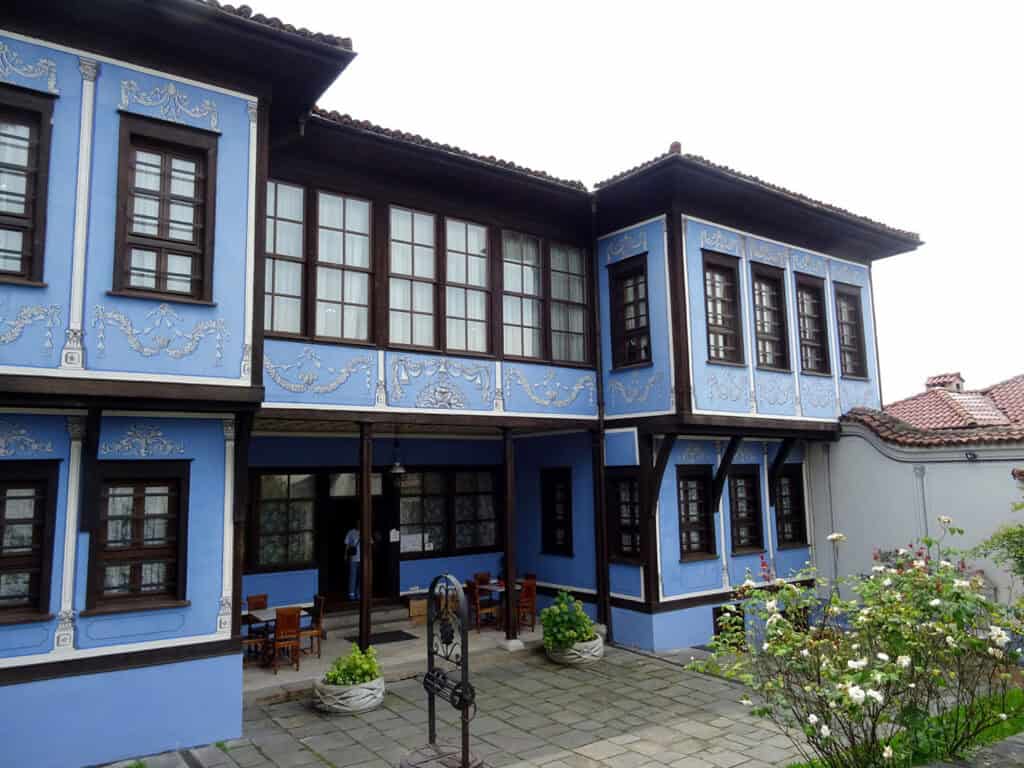
The National Revival Period (19th century) revived Bulgarian identity through architecture. Characterized by local stone and timber, this style emphasizes functionality and harmony. Homes feature rich decorations, painted facades, and intricate wood carvings.
The Hindliyan House in Plovdiv exemplifies Revival elements with wide eaves and expansive windows. This era combined national pride with innovative design, creating impressive structures across Bulgaria’s towns and cities.
See Also European-Style Architecture
Architectural Characteristics
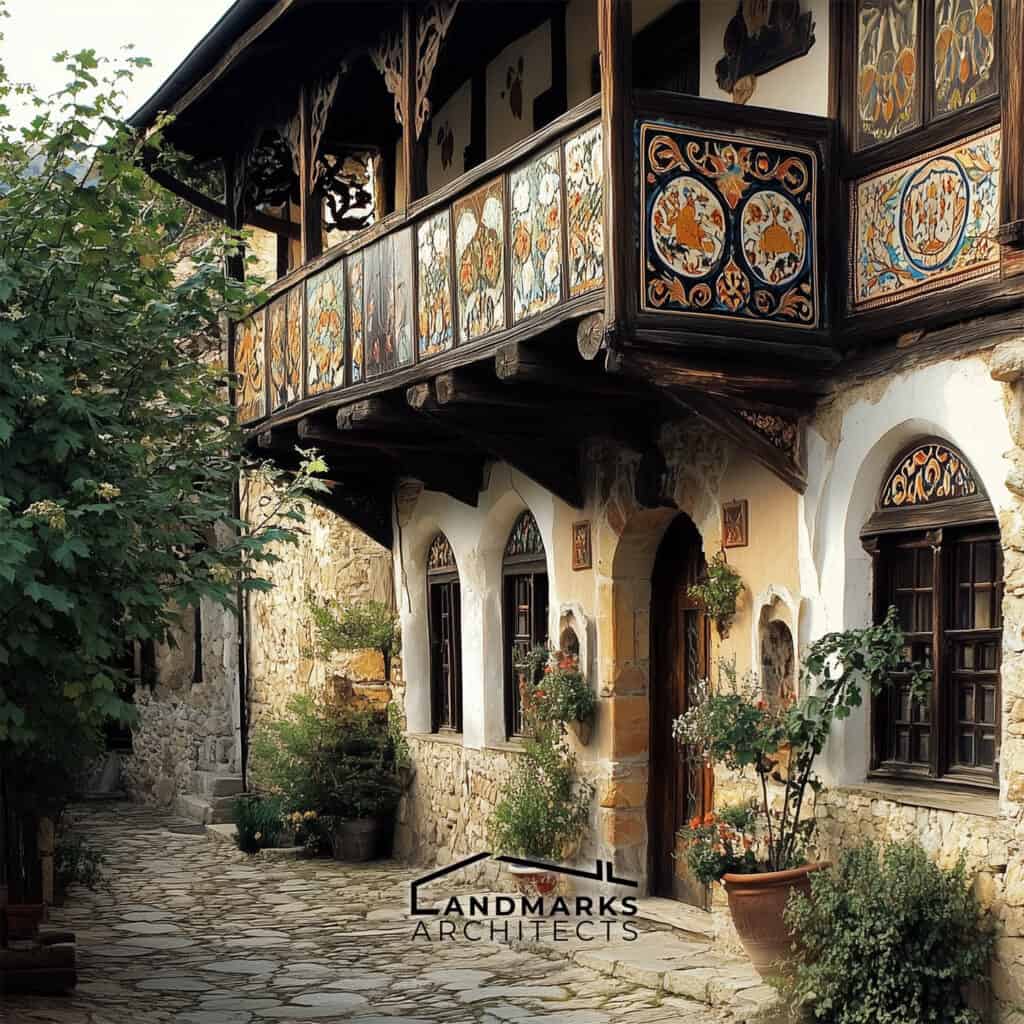
Traditional Bulgarian architecture combines local materials, intricate decoration, and distinctive features, reflecting the region’s culture and history. Key elements include stone and wood, specific design motifs, and practical adaptations to the landscape.
Use of Local Materials
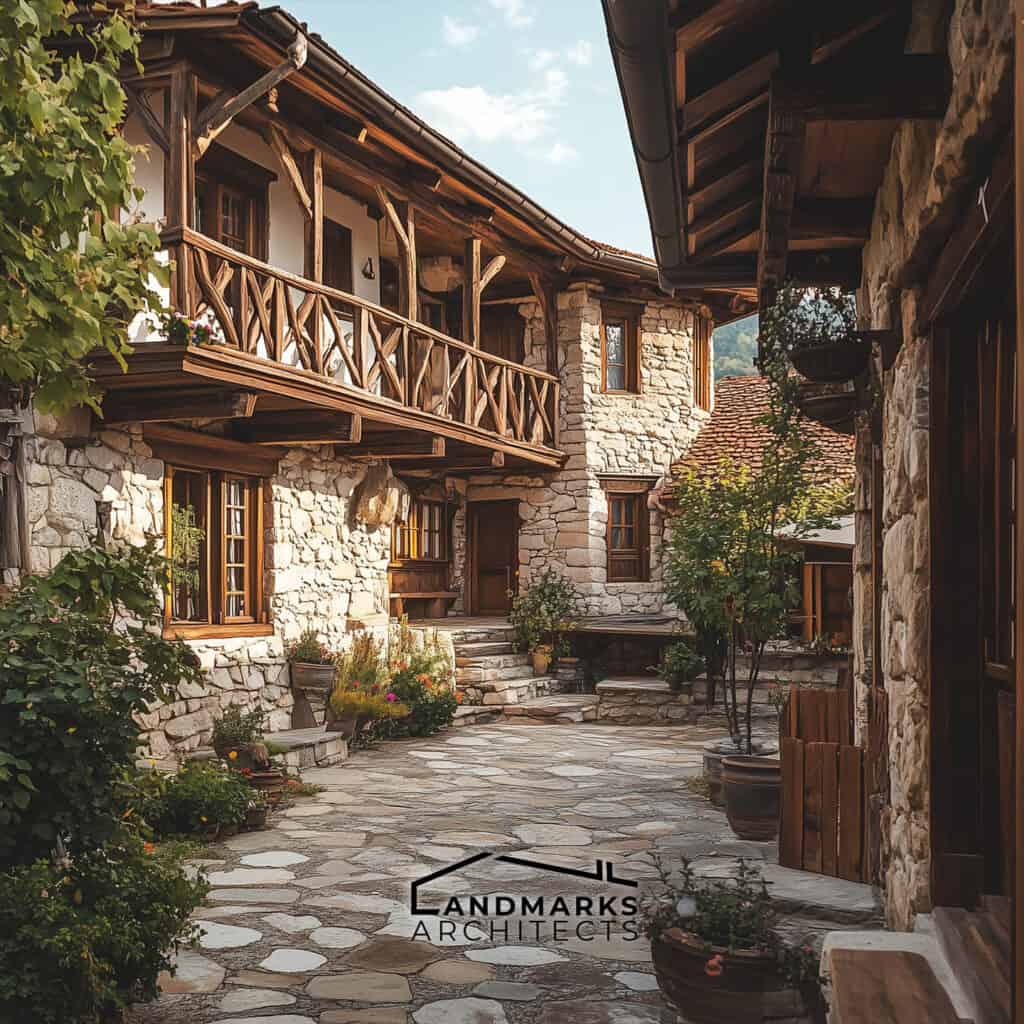
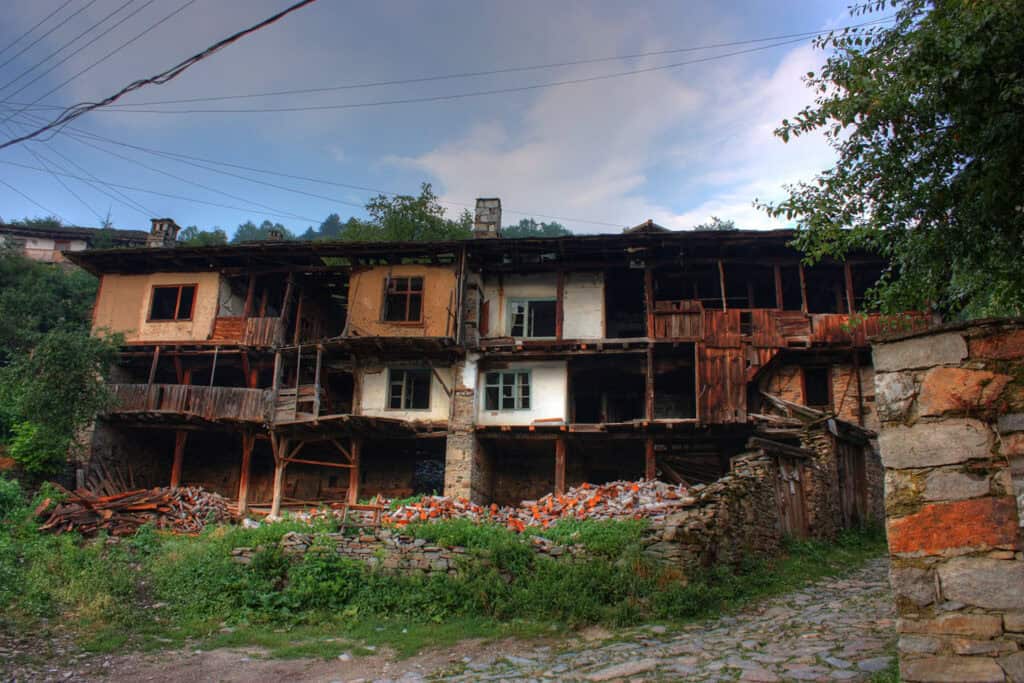
Buildings use locally sourced stone and wood, ensuring durability and natural aesthetics. In areas like the Rhodope Mountains and Black Sea coast, thick stone walls and wooden beams insulate against extreme temperatures, showcasing practical climate adaptations.
See Also Traditional Swiss Architecture: 5 Key Styles & Modern Influences
Decoration and Motifs

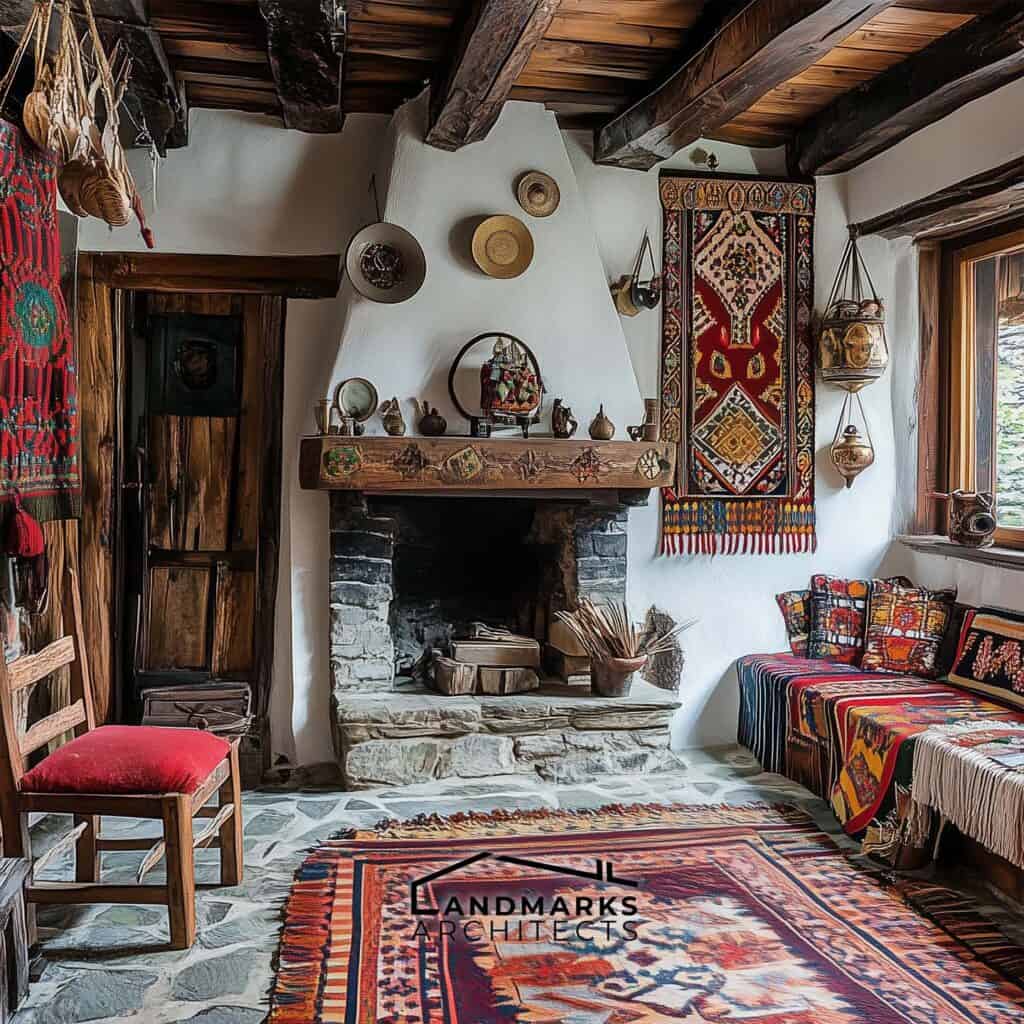
Bulgarian Revival architecture is known for its impressive, symbolic decorations. Houses feature intricate carvings and painted murals inspired by nature and folklore, with geometric and floral patterns. Interiors may include decorated fireplaces, highlighting family identity and artisans’ craftsmanship.
Structural Features
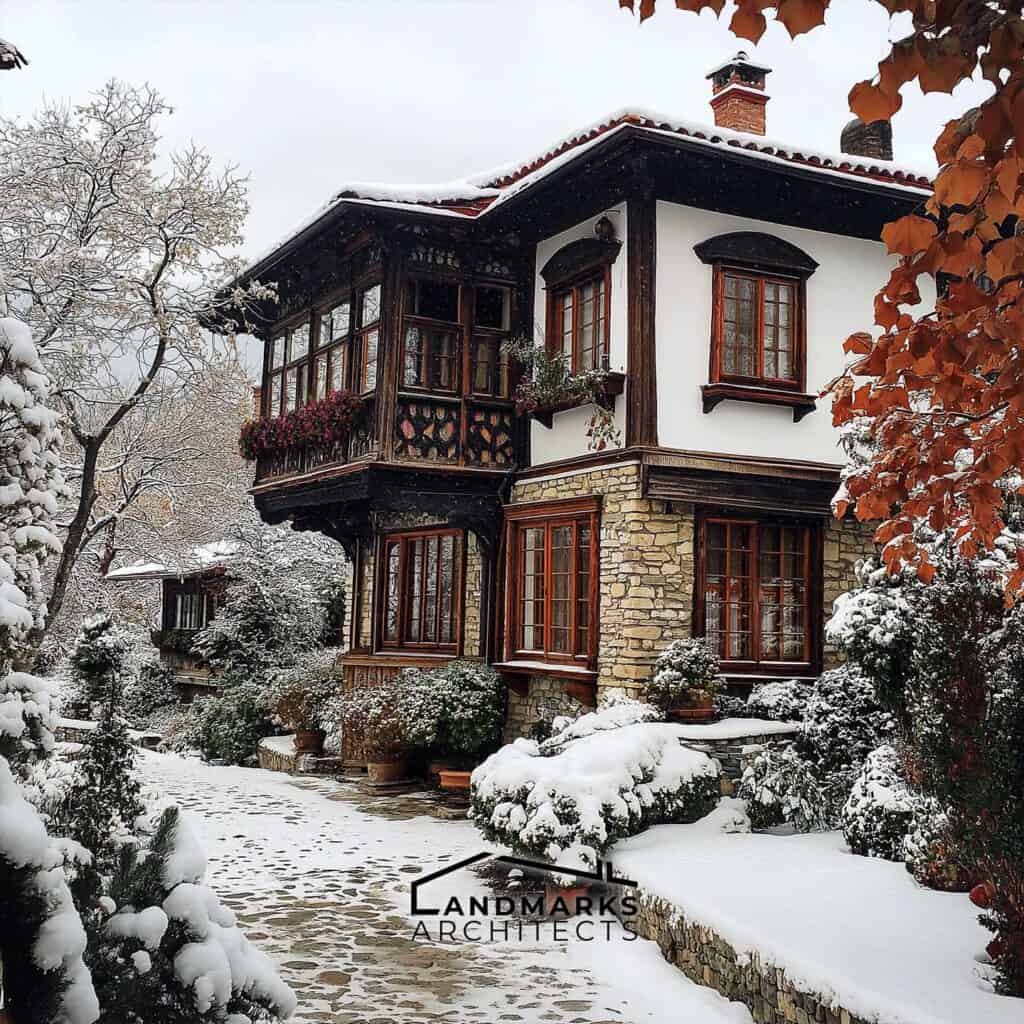
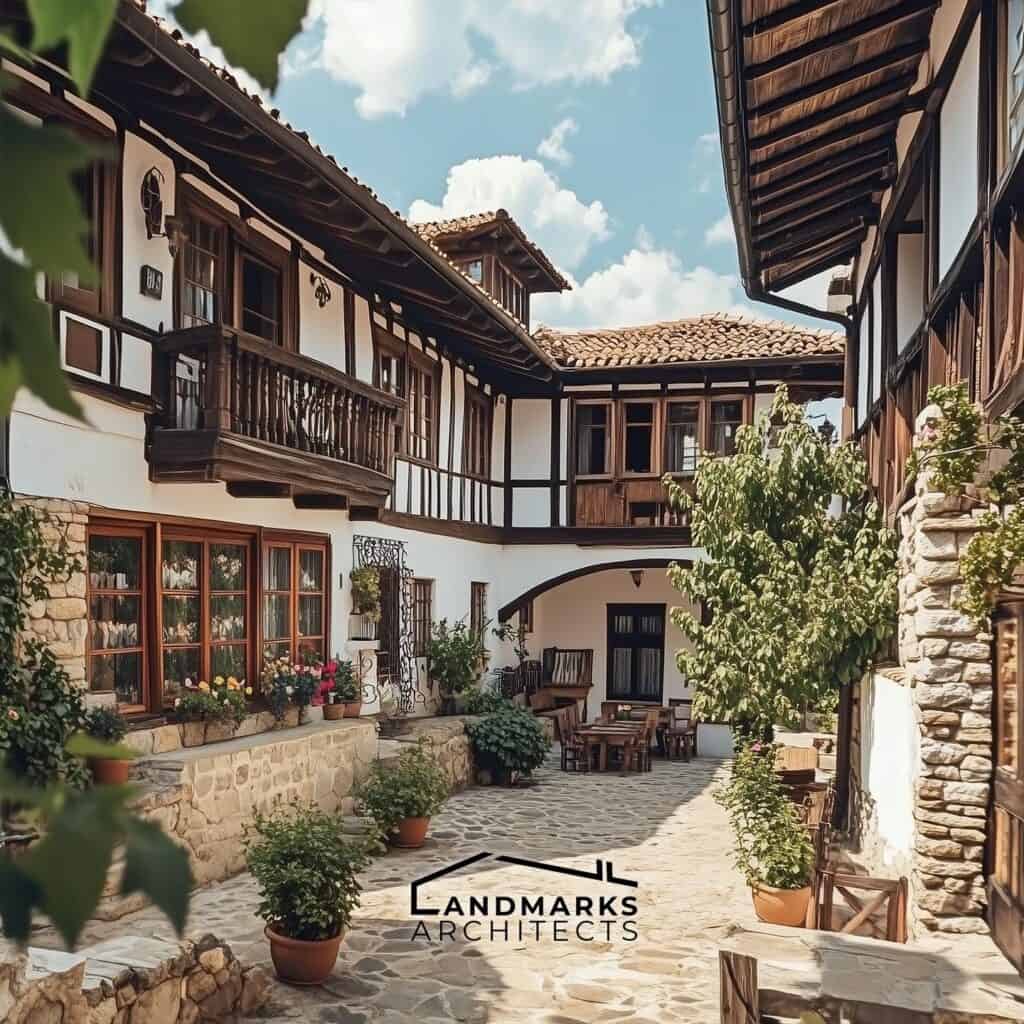
Traditional Bulgarian houses have unique elements like asymmetrical designs and spacious courtyards. Multi-level homes with large windows offer natural light and harmony.
Chardaks (verandas) provide shaded outdoor spaces, while steeply pitched roofs manage heavy snowfall and spacious rooms accommodate family life.
See Also Famous Architecture in Europe
Preservation and Modern Influences

Traditional Bulgarian architecture features wooden ceilings and stone foundations, crucial for preserving cultural heritage, especially in regions like the Rhodope Mountains and the Black Sea coast.
Many old houses reflect Bulgarian Revival architecture with vibrant murals, intricate decorations, and wooden beams enhancing both aesthetics and structural integrity.
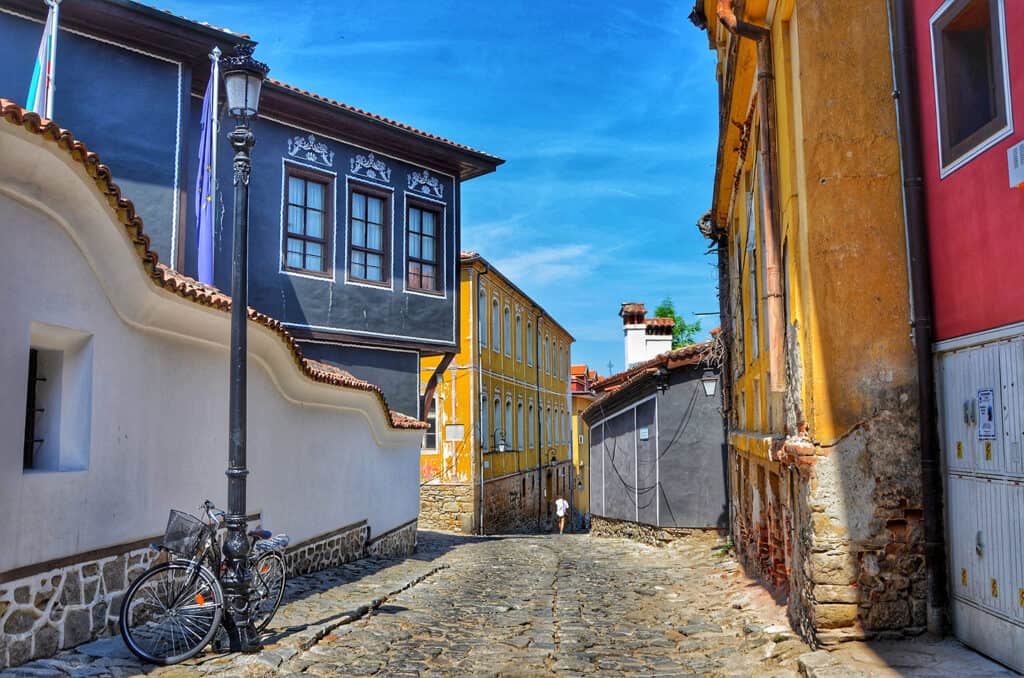

Visitors to Plovdiv’s Old Town see the blend of modern influences with historical styles. New designs often incorporate revival elements, keeping Bulgaria’s architectural legacy alive. The integration of natural light and modern materials evolves while respecting traditional forms.
Renovations focus on enhancing features like courtyards and fireplaces, central to the traditional layout. Cultural institutions, such as the ethnographic museum, educate the public about the Ottoman Empire’s impact on Bulgarian architecture and help preserve these historic buildings.

Traditional Bulgarian Architecture: A Recap
Traditional Bulgarian architecture masterfully blends ancient Thracian roots with Byzantine beauty, Ottoman adaptations, and National Revival innovation.
By integrating local materials and intricate designs, Bulgarian buildings reflect a rich cultural narrative while adapting to modern influences. Today’s architecture preserves this heritage, harmonizing historical styles with contemporary needs, ensuring Bulgaria’s unique architectural legacy continues to thrive.









